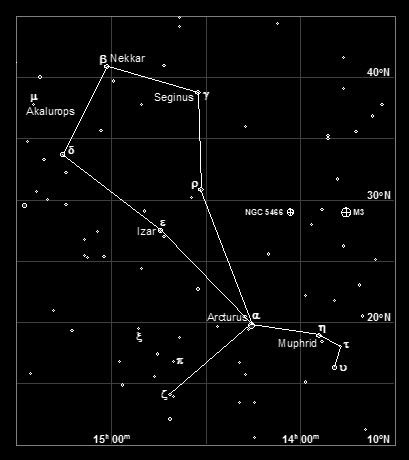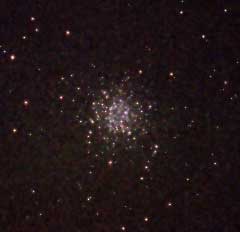Bootes

This is because it is a so-called “Population II” or “Halo” star with a highly inclined orbit around the Milky Way which cuts across the general stream of Population I stars, such as our Sun. Arcturus is also very old, twice as old as the Sun and has already completed the hydrogen burning phase of its life and left the main sequence to become a cool orange giant with about 27 times the diameter of the Sun.
Bootes does not possess many deep sky objects of note. Its brightest galaxy, 11th magnitude NGC 5248 in the far south of the constellation (not shown) is an outlier of the vast Virgo cloud. Bootes does have one 9th magnitude globular cluster (NGC 5466), but this is upstaged by the much more impressive M3 in nearby Canes Venatici.

NGC5466
Pi Bootis close to Xi in the south of the constellation consists of 5th and 6th magnitude stars with a similar separation. The yellow 4th and 6th magnitude components of Alkalurops (Mu Bootis) are wide enough (108”) to be split by binoculars. The fainter component is double again, with a much more challenging split of 1.5”. Two further worthwhile doubles in the far north of Bootes (not shown) are Kappa Bootis and 44 Bootis. The latter consists of 5th and 6th magnitude stars 2” apart.